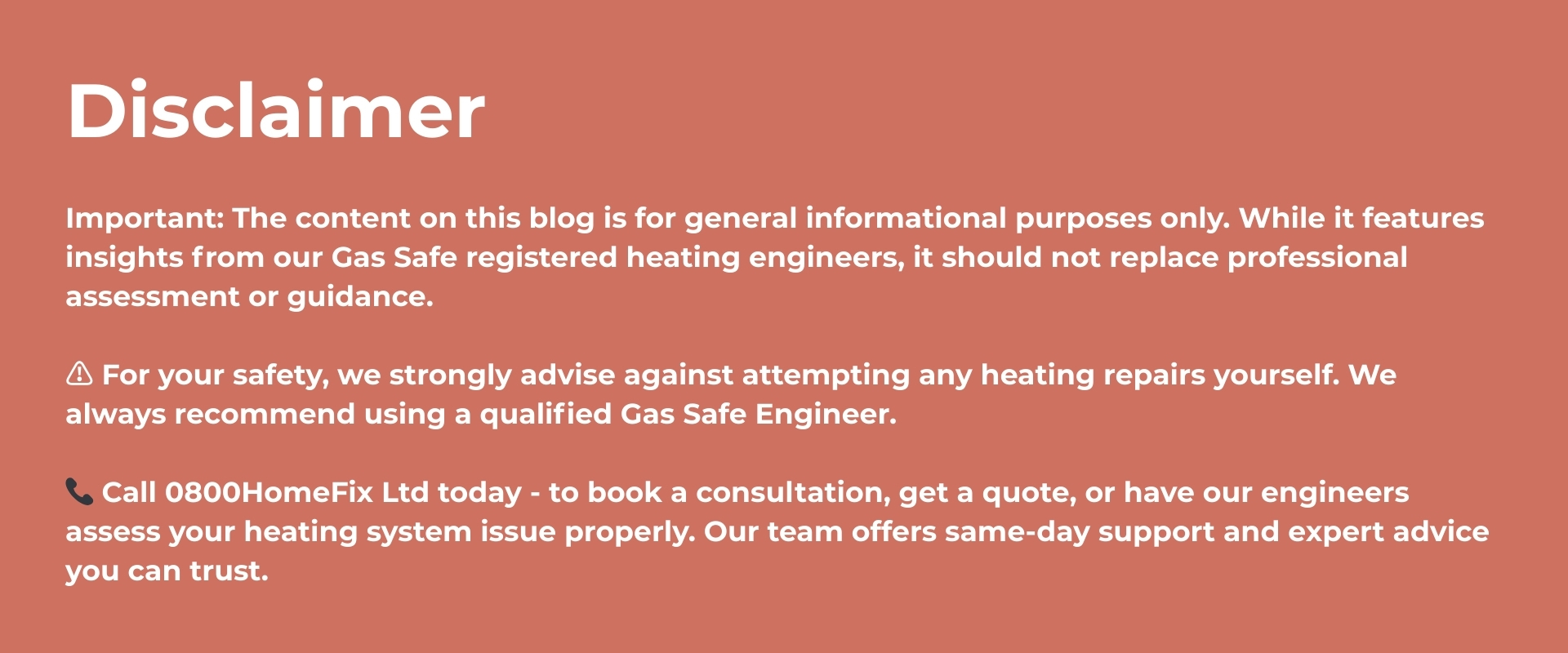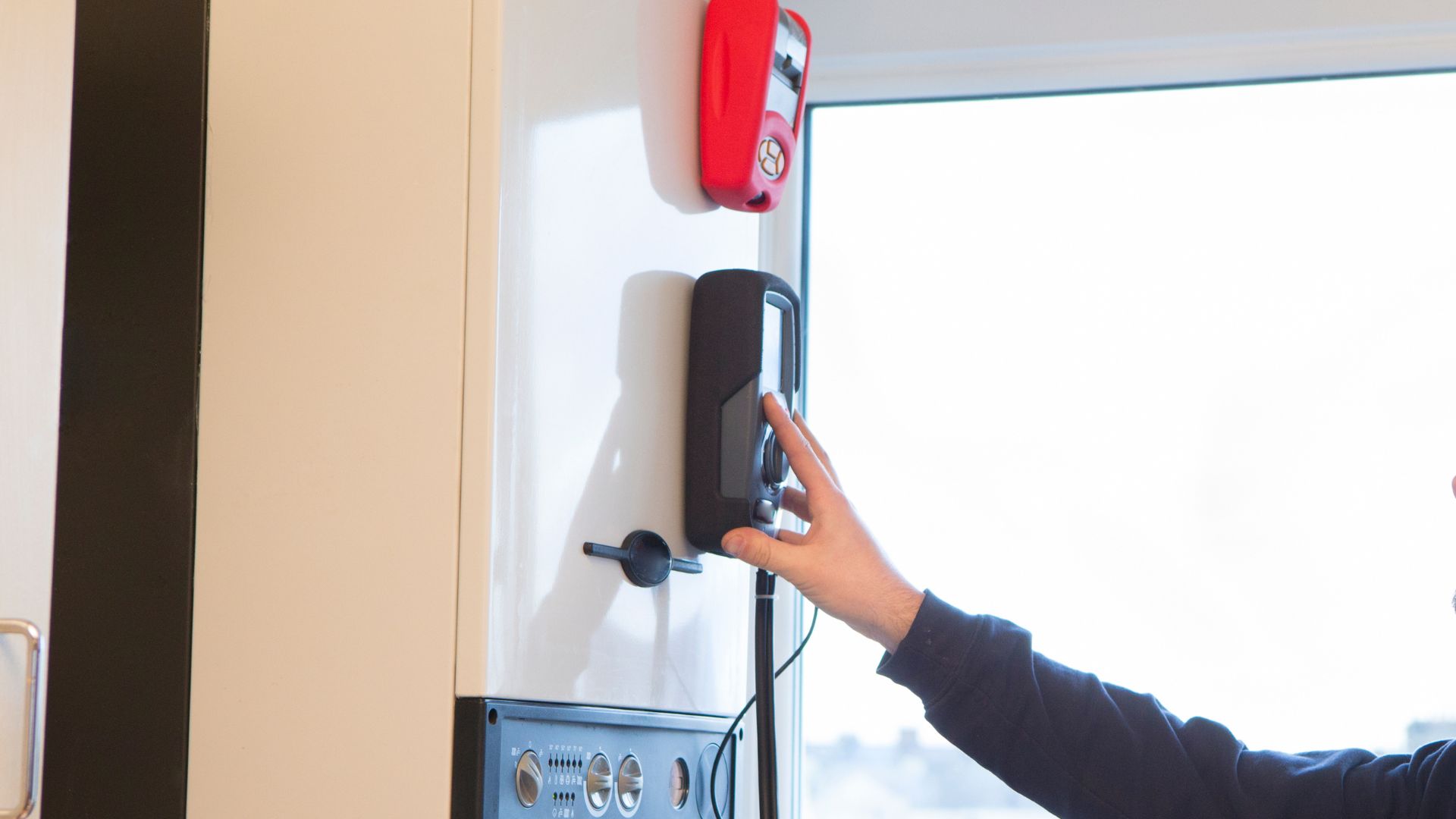

Maintaining the correct boiler pressure is crucial for keeping your central heating system running efficiently. If the pressure is too low, your radiators may struggle to heat up and you could even lose your hot water supply altogether. Thankfully, topping up boiler pressure is a fairly straightforward task for most UK homeowners.
The process for topping up boiler pressure may vary depending on the type of boiler installed, such as a combi boiler, and this guide covers the general steps for most UK homes.
At 0800 Homefix, we regularly help customers across London top up their boiler pressure safely and correctly. This guide breaks down everything you need to know to do it yourself, plus when to call in a professional.
What Is Boiler Pressure and Why It Matters
Boiler pressure is the force that pushes hot water through your central heating system. It’s measured in bars, and most modern boilers work best between 1.0 and 1.5 bar when the system is cold. Boiler pressure is a type of water pressure specific to your heating system, and maintaining the correct level is essential for proper hot water and heating performance.
If you notice a drop in pressure below this level, your boiler may lock out or function poorly.
How to Know If You Need to Top Up Boiler Pressure
If you’ve noticed any of the following signs, your boiler pressure might be too low:
- The pressure gauge reads below 1.0 bar
- You have no hot water or radiators aren’t heating properly
- You see error codes like Ideal F1, Vaillant F22, Baxi E119, or Worcester A1
- The boiler keeps turning off and on (short cycling)
- The boiler displays a flashing low-pressure warning light
Tools You Will Need
Before you begin, gather the following:
- Access to your boiler’s pressure gauge
- Knowledge of your boiler’s filling loop location (usually a silver braided hose beneath the unit)
- A towel or cloth to catch any drips
- A spanner or wrench (if your boiler requires one to operate the filling valve or key)
How to Top Up Boiler Pressure: Step-by-Step
Step 1: Turn Off the Boiler
Turn off the boiler and wait at least 30 minutes to allow it to cool down completely. This waiting period helps avoid injury and ensures you get an accurate pressure reading.
Step 2: Locate the Pressure Gauge
This is usually found on the front of the boiler and should have a dial marked in bars. Some boilers have a digital gauge that displays the pressure reading on a screen, making it easy to check. A red or green zone often indicates the ideal range.
Step 3: Locate the Filling Loop
You’ll find this underneath the boiler – a flexible silver hose connecting two valves. Some modern boilers like the Baxi Easy-Fill system have a green lever instead of two taps.
Note: Check whether your filling loop is built in (integrated into the boiler casing) or external (a separate device attached to the pipework). Built-in filling loops are usually hidden behind a panel, while external ones are visible and connected outside the boiler. This distinction affects how you access and operate the filling loop.
Before proceeding, make sure the filling loop is securely attached at both ends to prevent leaks and ensure safe repressurisation.
Step 4: Open the Valves Slowly
Gently turn both valves (or the green lever) so the valves are open and water flows into the system. The filling loop connects the boiler to the cold mains water supply, so make sure the system is properly connected to the mains supply before starting. As you open the valves, you may hear water flowing-this is cold water from the mains supply entering the system. Listen carefully to hear water flowing, which indicates that more water is entering the boiler. Monitor the pressure gauge for a steady pressure rise as more water flows in. If your valve has a line, ensure the line is aligned with the pipe for correct operation.
Step 5: Stop at 1.3–1.5 Bar
Once the gauge reaches the recommended level or ideal pressure (usually 1.3–1.5 bar, but check your manual as it may vary slightly), turn both valves back to the off position. Double check that both valves are securely closed to prevent leaks or pressure drops. Don’t go over 2.0 bar-too much pressure can lead to other issues.
Step 6: Reset the Boiler
If it had shut down or locked out due to low pressure, press the reset button or follow the manual instructions to get it back up and running. After resetting, make sure to switch the boiler back on to resume normal operation.
What If the Pressure Keeps Dropping?
Topping up boiler pressure shouldn’t be a regular chore. If you notice that your boiler pressure has dropped or dropped gradually, it may indicate a problem affecting the entire heating system. Repressurising should only need to be carried out occasionally; if you find yourself needing to do this often, it could signal a deeper issue within the boiler system, such as:
- A leaking radiator or pipe
- Faulty pressure relief valve (PRV)
- Internal component failure
- Expansion vessel issues
These are problems best diagnosed by a Gas Safe registered engineer from 0800 Homefix.
When to Call 0800 Homefix
While topping up your boiler pressure is safe for most homeowners, you should contact us if:
- The filling loop is missing or hard to reach
- You notice leaking water near the boiler or radiators
- The pressure drops again within a day or two
- You’re seeing frequent error codes despite topping up
- You’re unsure of how to operate the valves
If you are unsure or the problem persists, it is best to contact a qualified heating engineer to ensure the issue is resolved safely and correctly.
We offer same-day boiler repairs across London, ensuring your boiler is safe, efficient, and running reliably.
Pro Tips to Prevent Low Boiler Pressure
- Bleed your radiators every few months but always recheck pressure after
- Schedule an annual boiler service with 0800 Homefix to ensure all essential checks and maintenance steps are carried out
- Install a pressure monitoring smart thermostat
- Check for leaks in visible pipes and radiator valves
- Use corrosion inhibitors to reduce build-up inside the system
FAQs
Can I top up boiler pressure with the heating on?
No. Always let your system cool before topping up to avoid injury and inaccurate pressure readings.
Is it normal to top up pressure often?
No. Frequent top-ups usually indicate a leak or component fault.
What if I overfill the boiler?
You may need to bleed a radiator to release pressure or call a professional if pressure stays too high.
How often should I check boiler pressure?
Every few weeks, especially before winter or after bleeding radiators.
Does boiler type matter?
The basic topping-up process is similar across combi, system, and conventional boilers, but you should always refer to your boiler manual or the manufacturer’s instructions for the correct way to re-pressurise your specific model. The method to re-pressurise can vary, and your boiler’s manual will provide guidance on whether to use a filling loop, filling key, or another technique.
How do I use a filling key to re-pressurise my boiler?
Some older boilers require a filling key instead of a filling loop. To re-pressurise, insert the filling key into the keyhole or slot as described in your boiler’s manual, then turn the key to allow water into the system until the correct pressure is reached. Always follow the manufacturer’s instructions. Many manufacturers provide a video guide on their website or YouTube to help you with this process.
Contact 0800 Homefix Today
Need help with your boiler pressure? Our Gas Safe engineers are just a call away. Whether it’s a routine top-up, full repair, or annual servicing, we offer reliable, affordable, and expert boiler care across London.
Call us or book online now to keep your home warm and water flowing.

